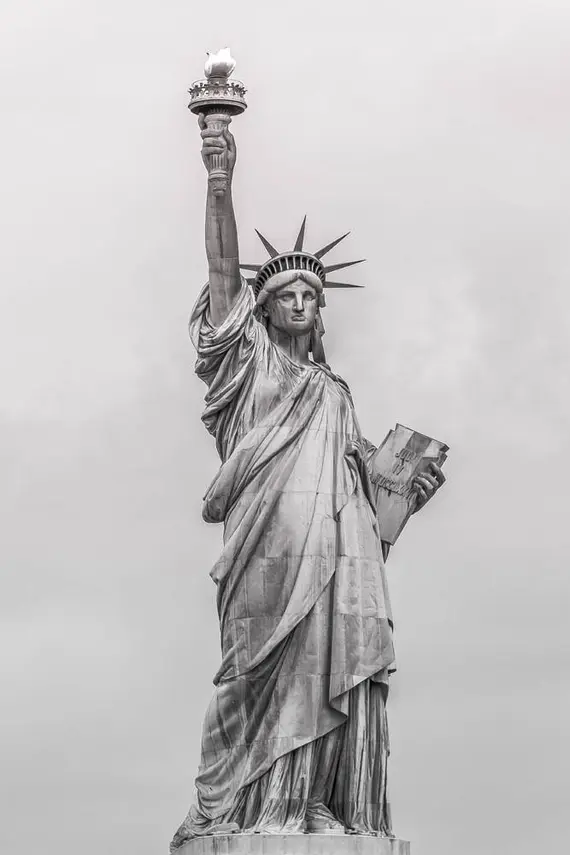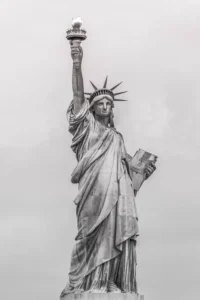Seen as a beacon of light and hope for immigrants across the United States, the Statue of Liberty, her torch held high in New York Harbour, is the universal symbol of American opportunity and individuality. In spite of this, the renowned figure we know and love today was born under a different vision, for a different continent. Initially known as not Liberty Enlightening the World, but instead as ‘Egypt Carrying the Light to Asia’—a colossal statue in the image of a woman from Upper Egypt, wearing traditional clothing, standing at the entrance of the Suez Canal.
Born in 1834, Frédéric Auguste Bartholdi is the Frenchman known today for designing Liberty Enlightening the World, commonly known today as the Statue of Liberty. And yet, before designing what would eventually be America’s Statue of Liberty, Bartholdi found inspiration in Egypt’s ancient architecture, soon envisioning a proposal for the entrance of the Suez Canal. In 1855, while journeying up the Nile, Bartholdi found himself fascinated with Egyptian and Ancient Egyptian culture, enraptured specifically by giant statues at AbuSimbel and the concept of the Colossus of Rhodes, which he would soon take inspiration from for when he proposed a Colossal statue of his own, around a decade later.
In 1867, Bartholdi proposed that the Egyptian government build a modern colossus for Port Said: a female fellah, or Arab peasant, in traditional garments, holding a torch aloft to serve as a lighthouse. It was to “…symbolize industrial and social progress in Egypt..” as well as represent Egypt as a whole, according to the Institute for the Study of Ancient Cultures. During a time when Egypt was undergoing extensive modernization under its Khedive Ismail (or Ismail Pasha), Bartholdi presented his lighthouse colossus as ‘Progress’. And while Ismail was sympathetic to his vision, unfortunately for Bartholdi, the Egyptian government rejected the proposed statue, as it was too expensive, since the country was already financially strained by the Suez Canal’s construction and weighed down in foreign debt.
This rejection would lead Bartholdi to repurpose and re-route the design from the Nile and hand it off to the New York Harbour in the United States as a birthday present, the revised design being in the shape of a woman carrying a blazing torch and renamed to ‘Liberty, Enlightening the World’. In France, Bartholdi would spend years after Egypt’s rejection raising funds for the construction of Liberty. Here, Bartholdi would find new patrons to breathe new life into his art, where “American supporters organised a site for the statue to stand on” as stated by Engelsberg Ideas. Bartholdi’s vision would soon be built, commemorating the alliance between the two countries during the American Revolution and their shared dedication to liberty.
In 1886, the Statue of Liberty was officially unveiled and dedicated. Today, the shape of Western society is continuously changing, not unlike Barthold’s vision, offering us a quiet yet profound lesson. Arguments over immigration, religious identity and the true meaning of liberty are quite common today, sparking debates often. The symbol of liberty, representative of freedom and refuge from tyranny and oppression was, at its genesis, a symbol meant to convey progress and bring light to a new rising age for the Islamic world. Appreciating andunderstanding the origins of the Statue of Liberty allows us to view the Statue not as a vision of the past, but instead as a monument continuously a part of the ever-changing world. A monument shaped by the turbulent nature of society and global culture, and whose definition of welcome is more complex and universal than it initially appears.
Shareah Ashfa,
Kufi Productions





